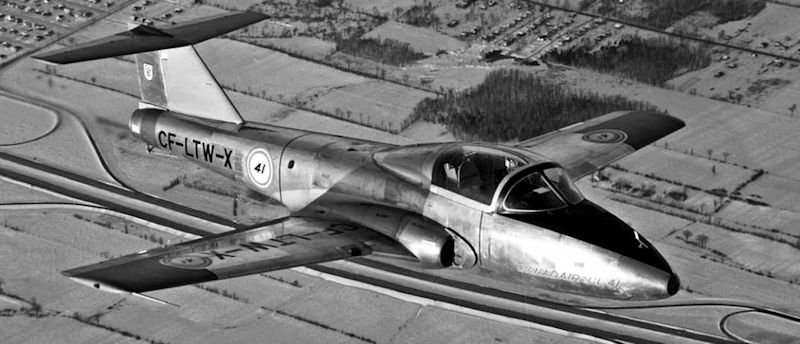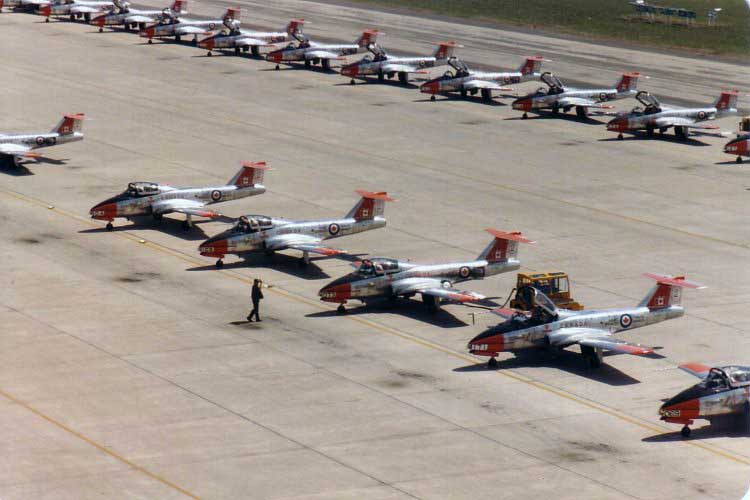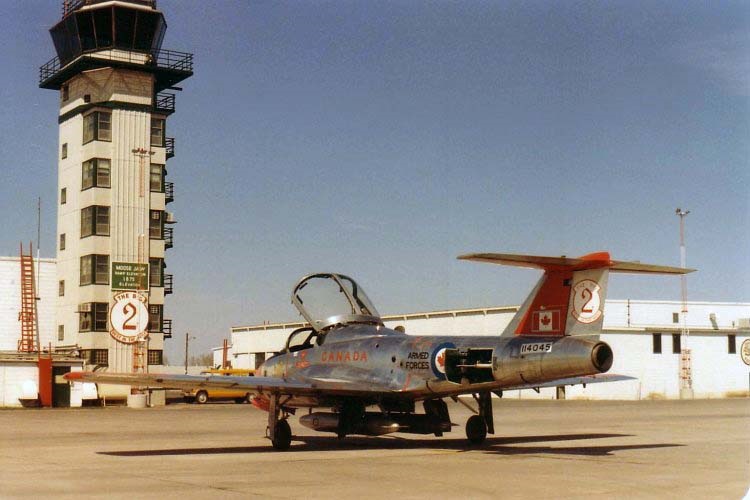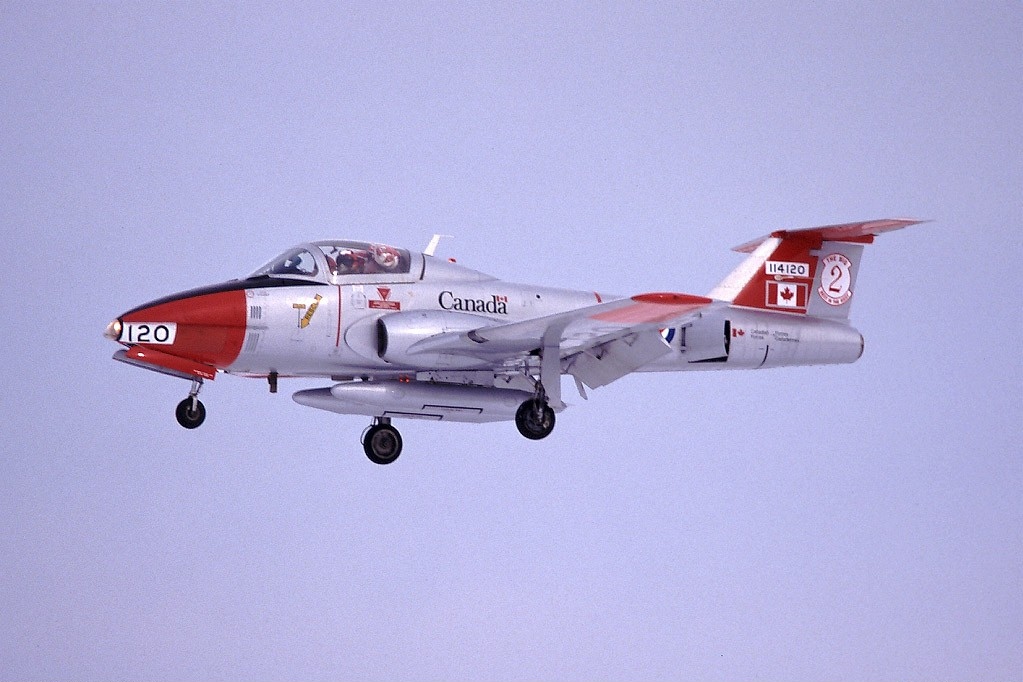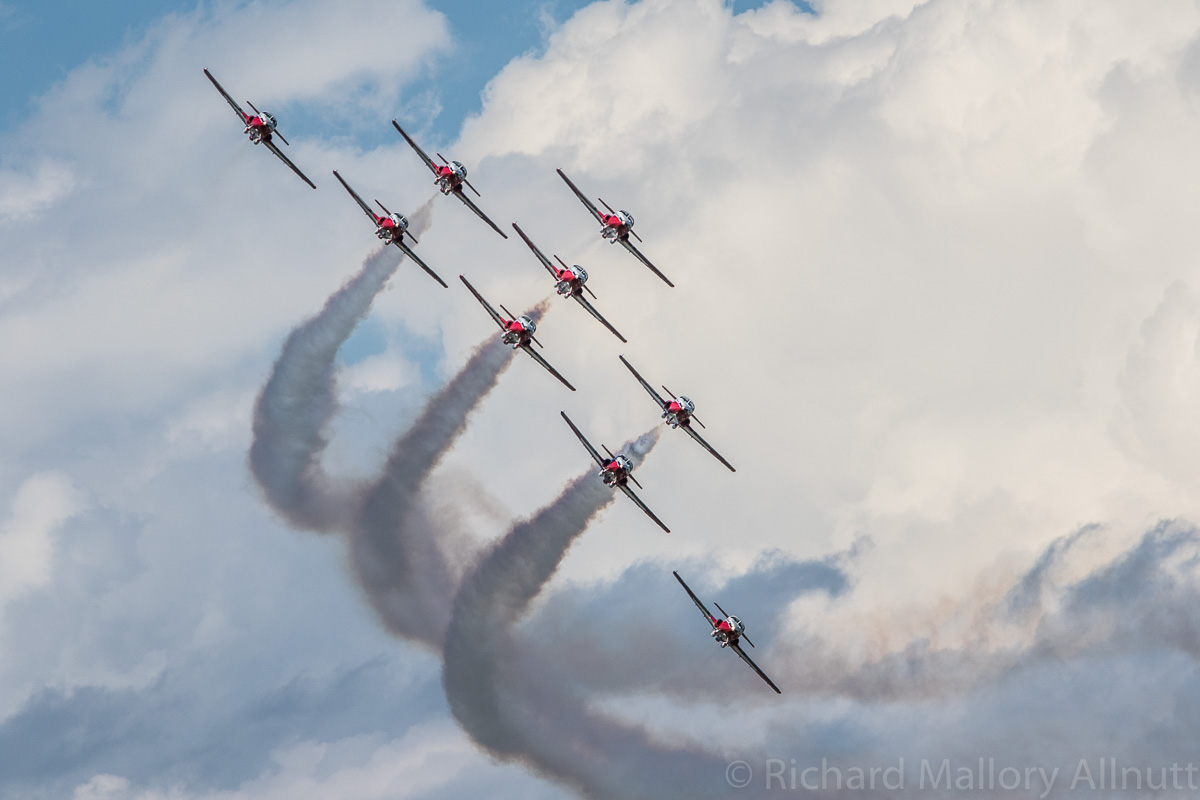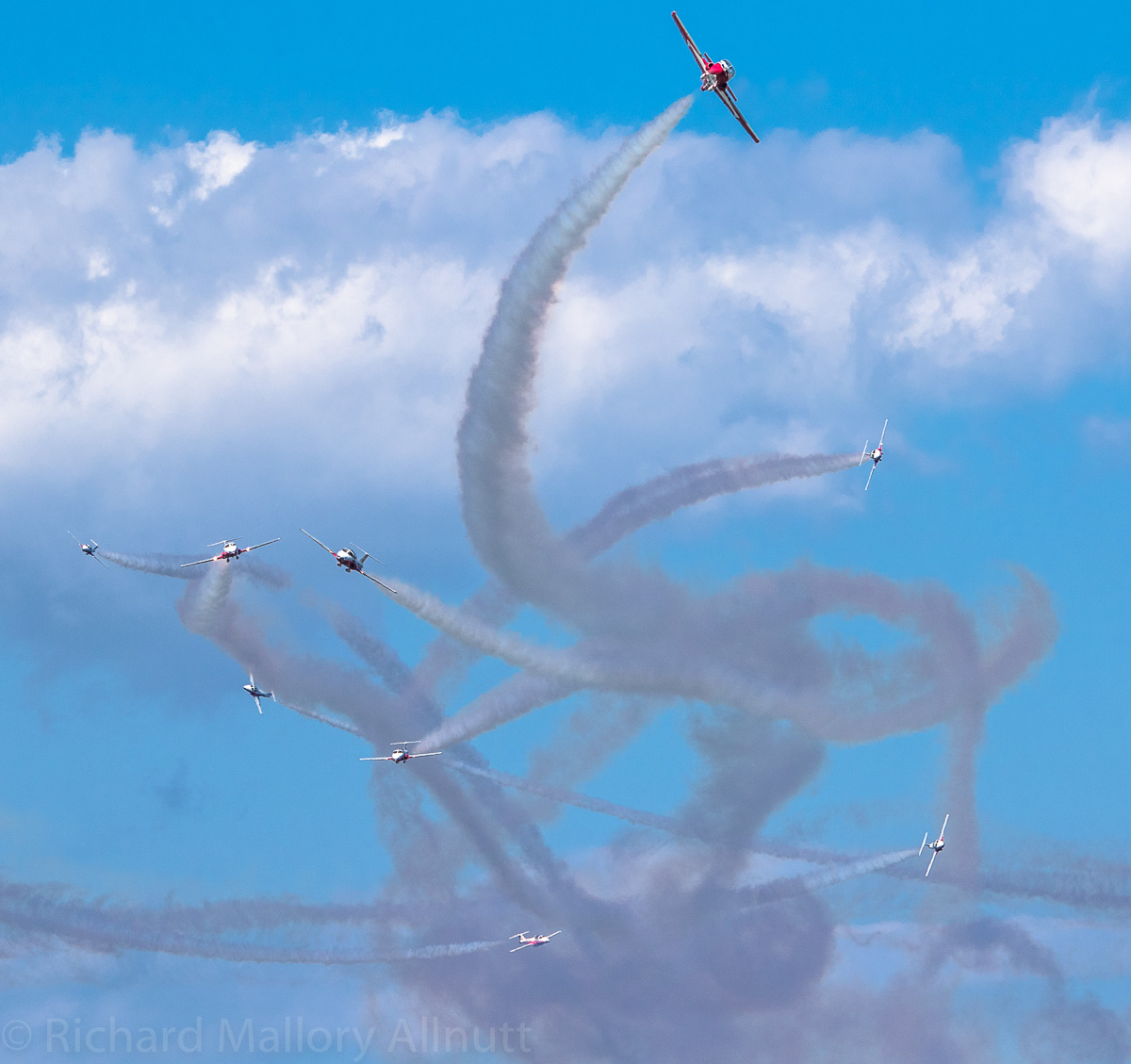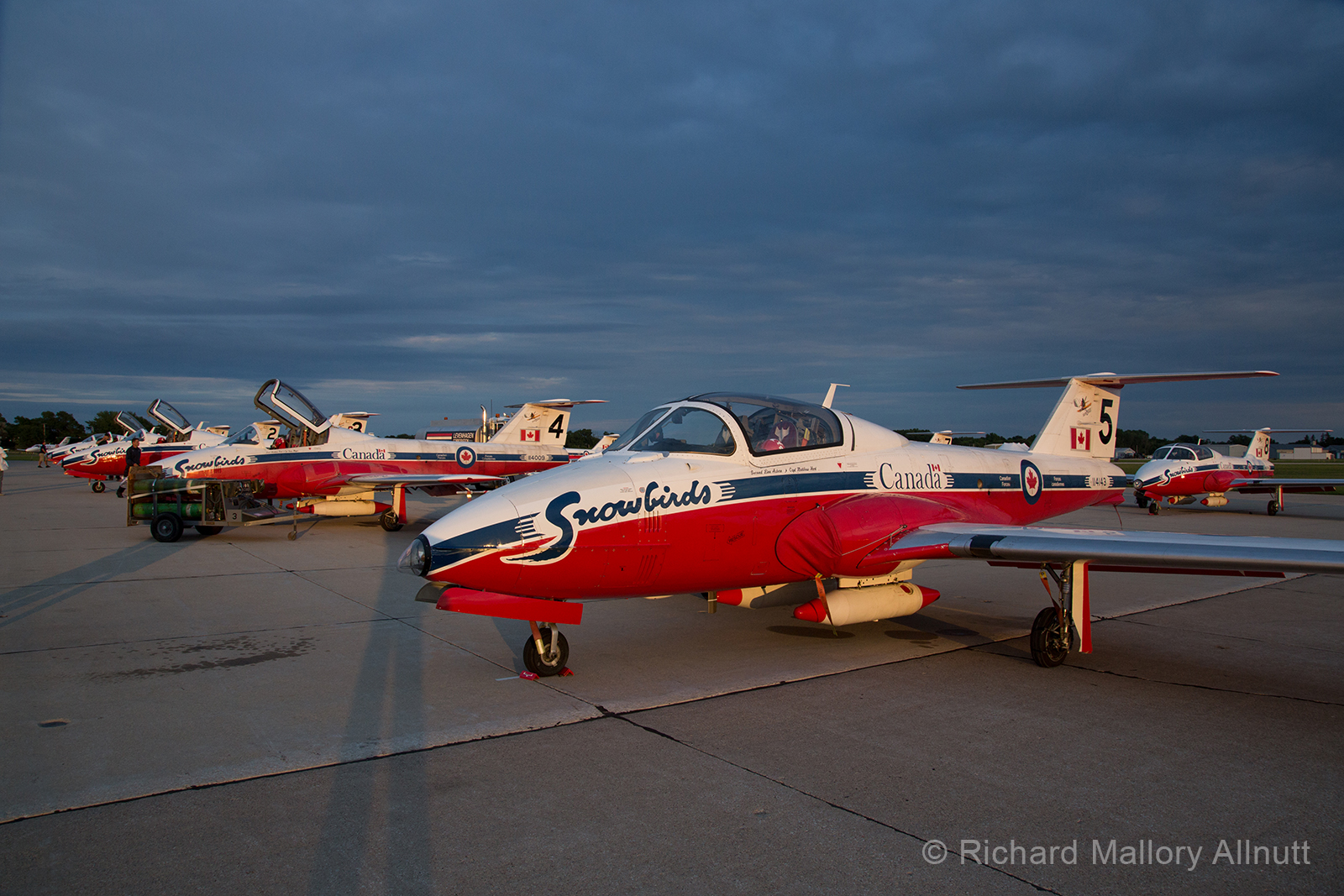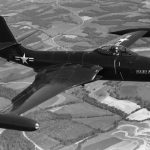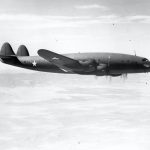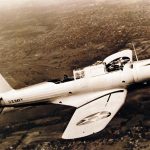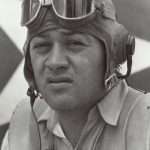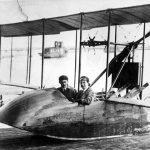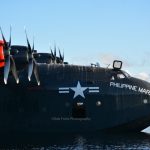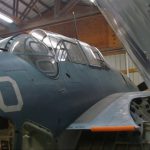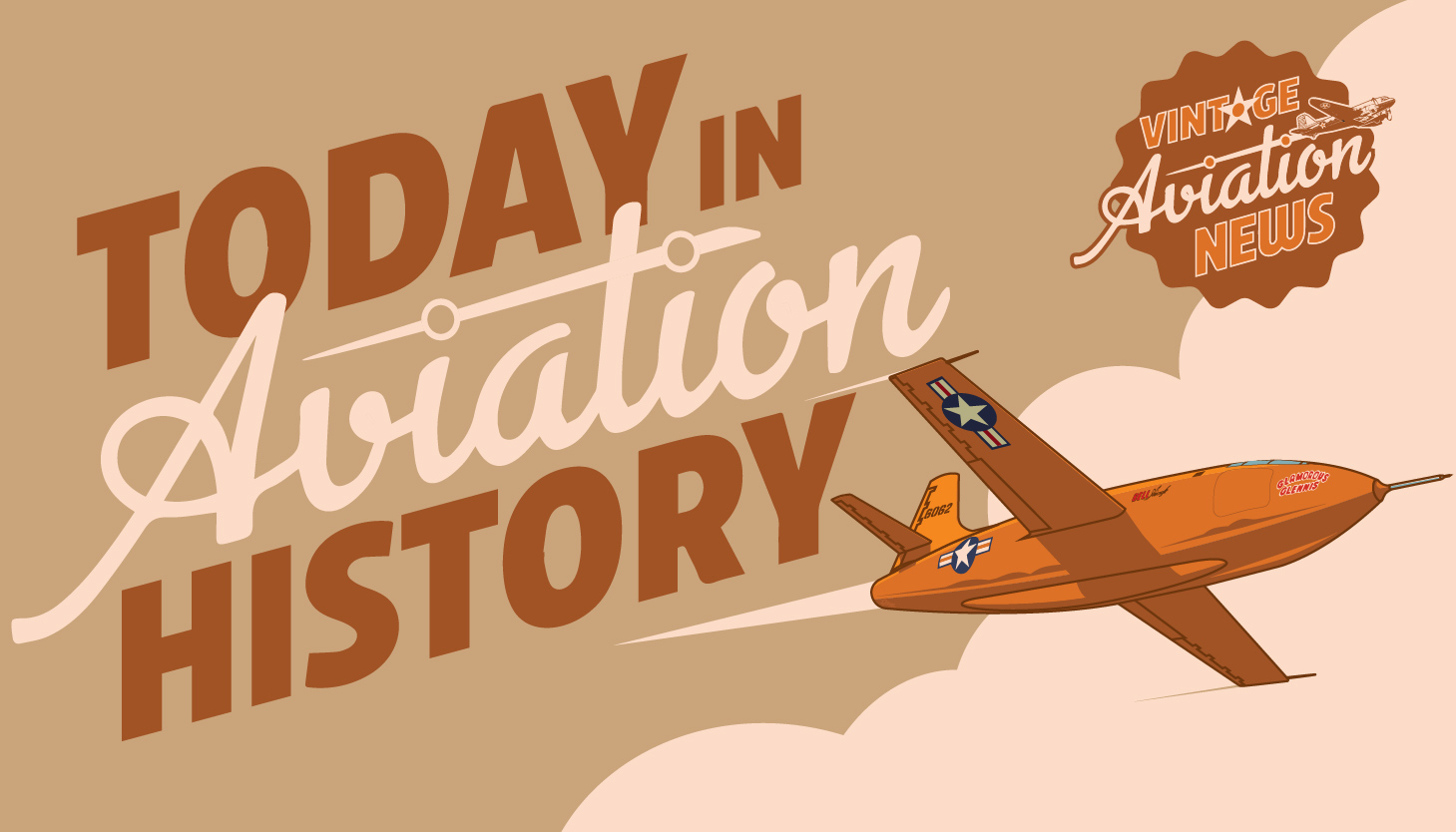 On this day in aviation history, January 13, 1960, the Canadair CT-114 Tutor jet trainer made its first flight. For thousands of airshow attendees, the CT-114 Tutor remains heavily associated with the Snowbirds, the Royal Canadian Air Force’s demonstration team. But this is only one aspect of the Tutor’s story, which now spans over 60 years.
On this day in aviation history, January 13, 1960, the Canadair CT-114 Tutor jet trainer made its first flight. For thousands of airshow attendees, the CT-114 Tutor remains heavily associated with the Snowbirds, the Royal Canadian Air Force’s demonstration team. But this is only one aspect of the Tutor’s story, which now spans over 60 years.
During the 1950s, Canadair Limited, based in Montreal, Quebec, had enjoyed success adapting various American designs for use in the RCAF, such as the CL-13 Sabre and the CT-133 Silver Star (the Canadian development of the Lockheed T-33 jet trainer). But by the 1950s, Canadair had decided to develop an indigenous jet fighter as a private venture within the company, leading to the CL-41. The result was a low-wing aircraft with a single turbojet engine, a tricycle undercarriage, and a side-by-side cockpit arrangement for an instructor in the right-hand seat and a student in the left-hand seat. Much like the American Cessna T-37 Tweet, the CL-41 Tutor was designed to be an Air Force student’s introduction to flying jet aircraft after learning how to fly in light piston-engine aircraft, often derived from general aviation designs. The design was finalized by August 1957 and three months later in November, construction of two prototypes and several static test airframes for the CL-41 would commence at Canadair’s Missiles and Systems Division at the company’s Plant 4.
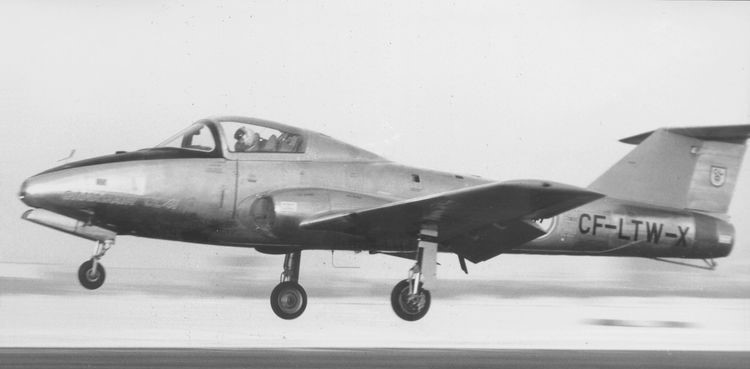
By 1958, the two CL-41 prototypes, CF-LTW-X and CF-LTX-X, were complete, save for the installation of an engine. Up to five engines had been proposed as power plants for the Tutor, these being the Armstrong-Siddeley Viper, the Continental Gabizo, the Rolls Royce RB.108, the General Electric J85, and the Fairchild J83. Due to availability issues and the cancellation of several engine development programs, it was decided to power the two prototypes with the Pratt & Whiney JT12 engine, which would be installed in preparation for flight testing on September 18, 1959. After further testing was completed, the aircraft was hoped to be ready to fly in December 1959, but mechanical issues pushed the first flight to January 1960. Finally, on January 13, test pilot Ian MacTavish took the first CL-41 prototype, CF-LTW-X, for its maiden flight. Production models were to be powered by the Orenda J85, a licensed Canadian development of the General Electric J85, used in contemporary American military trainers such as the Northrop T-38 Talon.
In September 1961, the Canadian government placed an order for 190 production models of the CL-41, the CL-41A, which was adopted into RCAF service as the CT-114 Tutor. Many of the Tutors were assigned to Canadian Forces Base (CFB) Moose Jaw, Saskatchewan and with the RCAF the Central Flying School at CFB Winnipeg, Manitoba. For the next 30 years, the CT-114 served dutifully as the RCAF’s primary jet trainer, instructing thousands of cadet pilots at the start of their own military careers. But the CT-114 would also see itself being modified for several new roles during its long career.
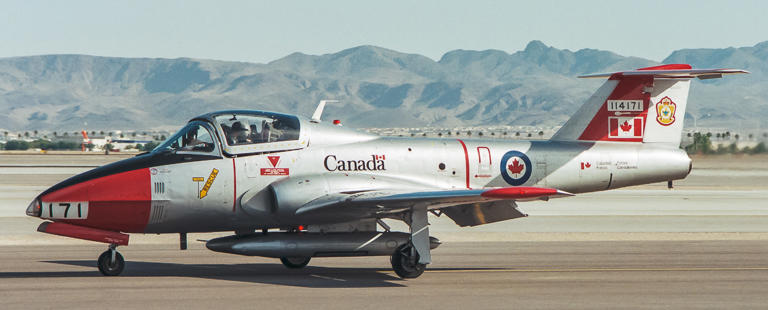
With the adoption of the Canadian-built version of the Lockheed F-104 Starfighter, the Canadair CF-104 Starfighter, the RCAF was in need of an aircraft that could serve as an electronic systems trainer. In order to remedy this, Canadair took the second CL-41 prototype, CF-LTX-X, and modified it with the radar nose of an F-104, becoming the CL-41R. While the aircraft did fly and it was later displayed at the 1963 Paris Air Show, it failed to attract any customers, and as such, it never went into production. In 1970, the sole CL-41R was donated by Canadair to the National School of Aerotechnics in Longueuil, Quebec. Today, CL-41R CF-LTX-X is in the reserve collections of the Reynolds-Alberta Museum in Wetaskiwin.
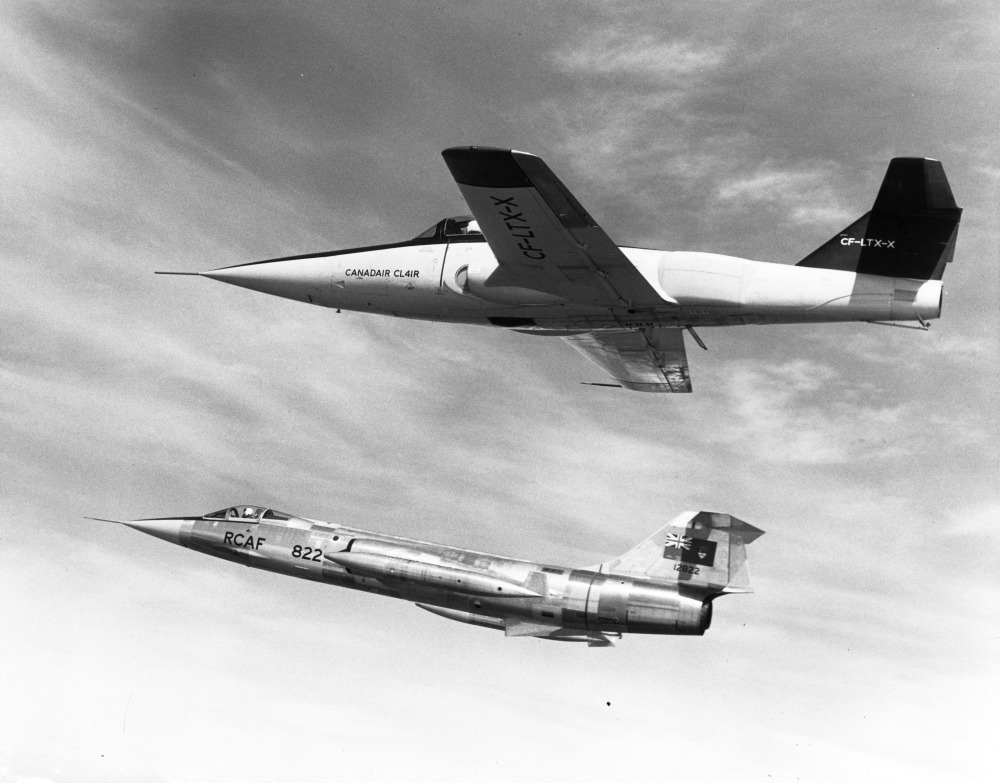
Although the majority of Tutors remained with service the RCAF, Canadair would find one export customer for the CT-114 Tutor. It was the Royal Malaysian Air Force (RMAF), and in 1966, Malaysia ordered 20 of a unique variant of the Tutor, the CL-41G, for use as a counterinsurgency (COIN) attack aircraft. Upon receiving the CL-41G, Malaysian pilots called it the Tebuan (‘Wasp’ in Malay), and for the next twenty years, the CL-41G Tebuan saw extensive use with the RMAF until it was replaced by both the Aermacchi MB-339 of Italy and the Douglas A-4 Skyhawk in 1986.
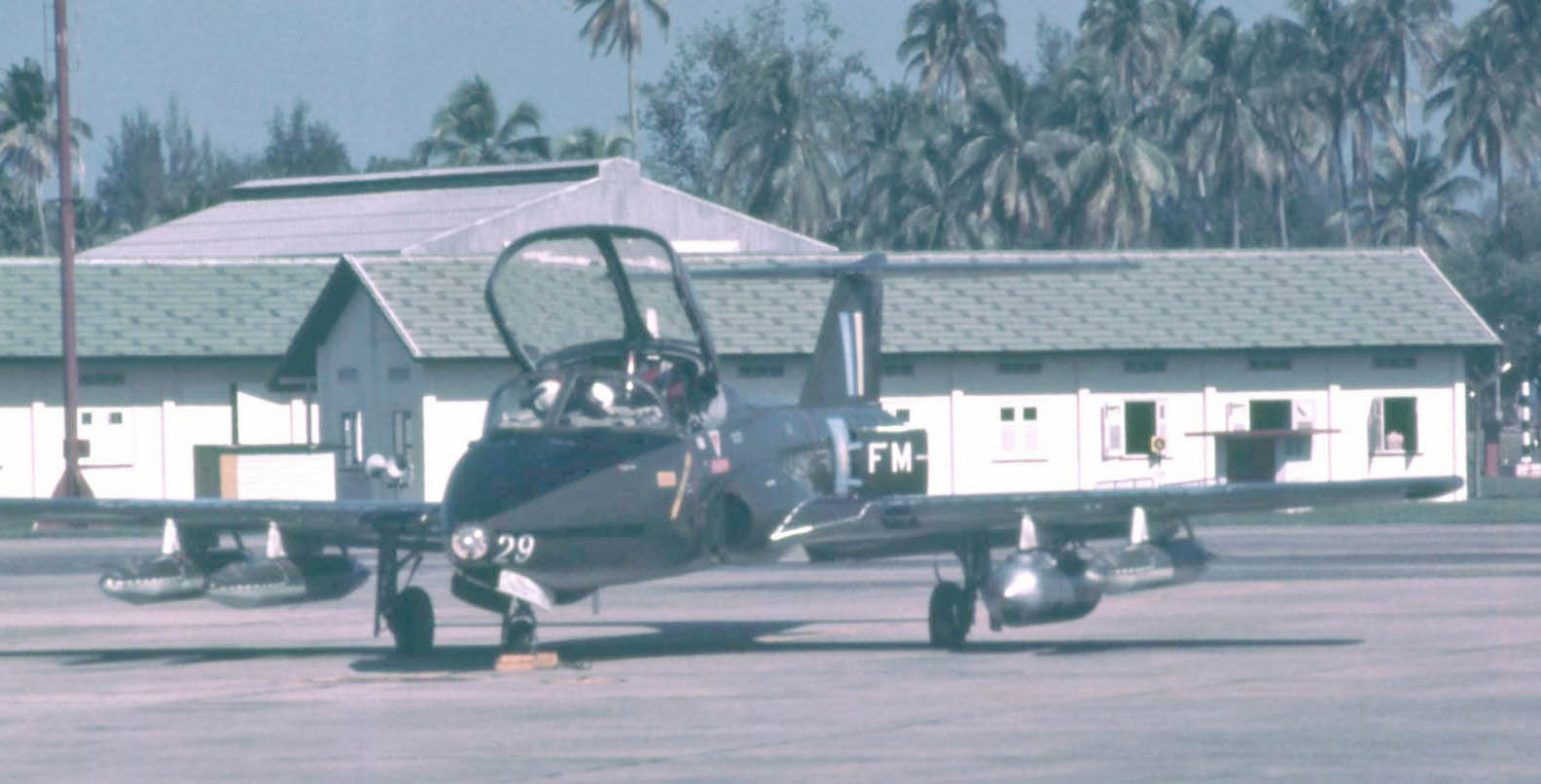
Even as the CT-114 had been in service for nearly 30 years, the type remained in use with the RCAF, receiving upgrade packages to remain relevant, such as upgraded avionics and a belly-mounted external fuel tank that had a capacity for 41 US-gallons (155 liters). But at the start of the new millennium, newer training aircraft were available, such as the British BAE Systems Hawk (deployed in Canada as the CT-155 Hawk), and the American Beechcraft T-6 Texan II (deployed as the CT-156 Harvard II). As such, the old Tutors were phased out of active training from the RCAF by 2000. However, the type’s easy flight characteristics have seen a limited number remain in service as testbeds for the Aerospace Engineering Test Establishment (AETE) at CFB Cold Lake, Alberta, and in the role of a demonstration aircraft.
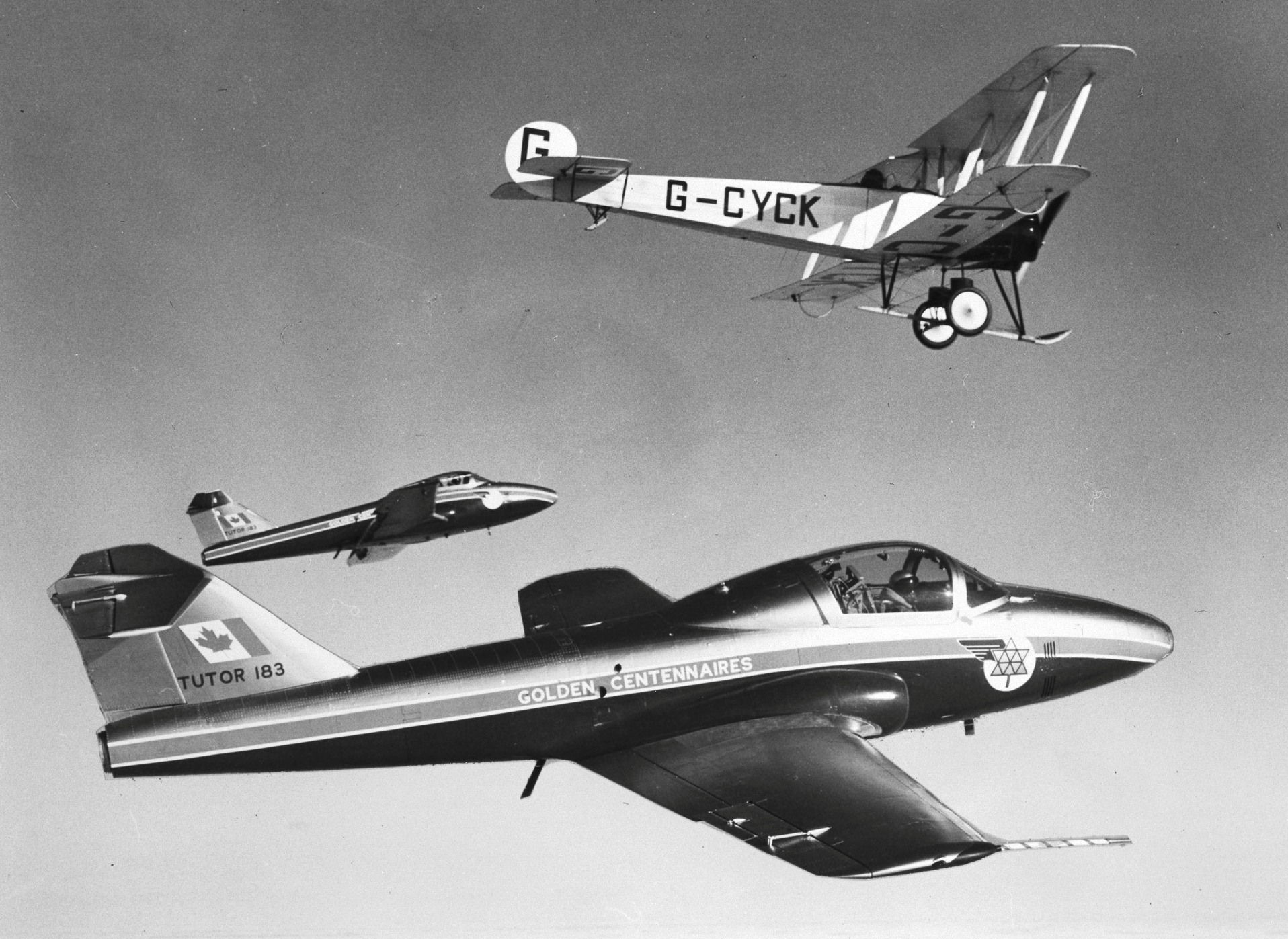
In 1967, Canada celebrated the centenary of Canadian Confederation, in which the three separate colonies of the United Province of Canada, Nova Scotia, and New Brunswick were united to form Canada within the British Empire. Ten Tutors were selected to become part of the Golden Centennaires display team, and they toured throughout the 1967 airshow season. But once the season ended, the Golden Centennaires were disbanded, and it was not until 1971 that the Royal Canadian Air Force’s official flight demonstration team, the Snowbirds, was established, and later organized as 431 Air Demonstration Squadron. Throughout their entire history, they have operated the CT-114 Tutor from CFB Moose Jaw and continue performing around the world for millions of airshow attendees. Besides their continued work in the RCAF, several Tutors can be found on display through Canada at various air museums or as part of public memorials and gate guardians. At least four Tutors have been listed on the US FAA civil registry as well.
Today, the Canadair CT-114 Tutor stands out, not only as one of the first primary jet trainers, but as an aerial demonstration aircraft, and as one of the longest serving aircraft in the Royal Canadian Air Force. While the Tutor may no longer be used for military flight training, it’s role as both a testbed for the AETE and as an aerial demonstration aircraft for the Snowbird will likely ensure that the Tutor still has more lessons to teach as it flies on into the foreseeable future.
Today in Aviation History is a series highlighting the achievements, innovations, and milestones that have shaped the skies. All the previous anniversaries are available HERE







